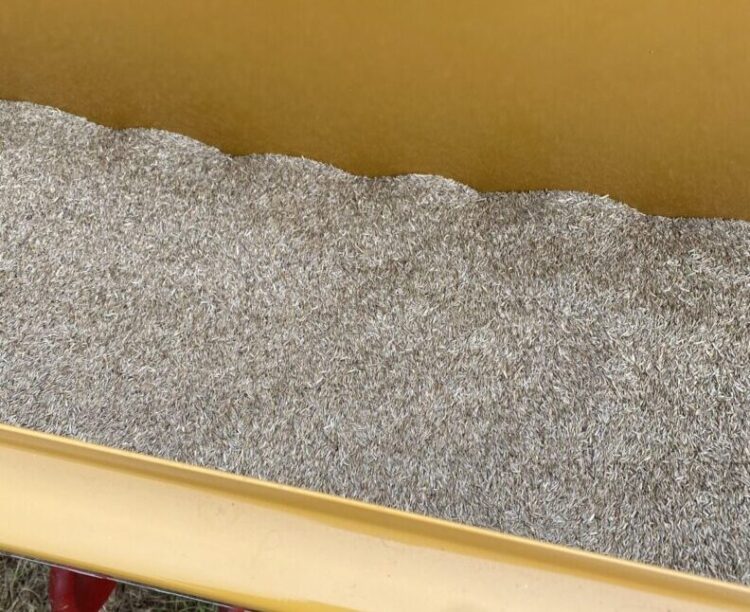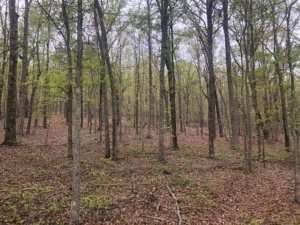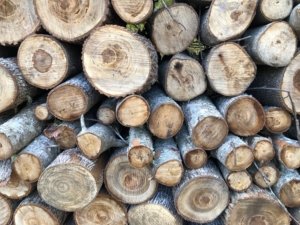Until this month, I watched the weather whenever we’d go to the farm, but I wasn’t what I’d say obsessed with the weather until it was time to plant seed. I now have three weather apps on my phone: WeatherBug, the Weather Channel and NOAA Weather. Because when you have a pile of seed to get in the ground, you have to time it perfectly (and you have no control over rain or shine).
We’d figured out that this fall we’d plant annual rye and red and crimson clover. Annual rye holds the soil in place and chokes out weeds. It can be good for cows in the fall. And it’s also a great starter seed to learn on and plant, without spending a whole lot more while you’re learning equipment.
Clover was my request but it has a great give-back. In addition to providing bees early spring nectar and pollen (my request) it also adds nitrogen back to the soil.
For the first time since we’ve had the farm, we were able to stay down there overnight, thanks to the user of a big fifth wheel camper. This meant we didn’t have to do the two hour each-way drive every day and gave us a whole lot more time to get a whole lot more done.
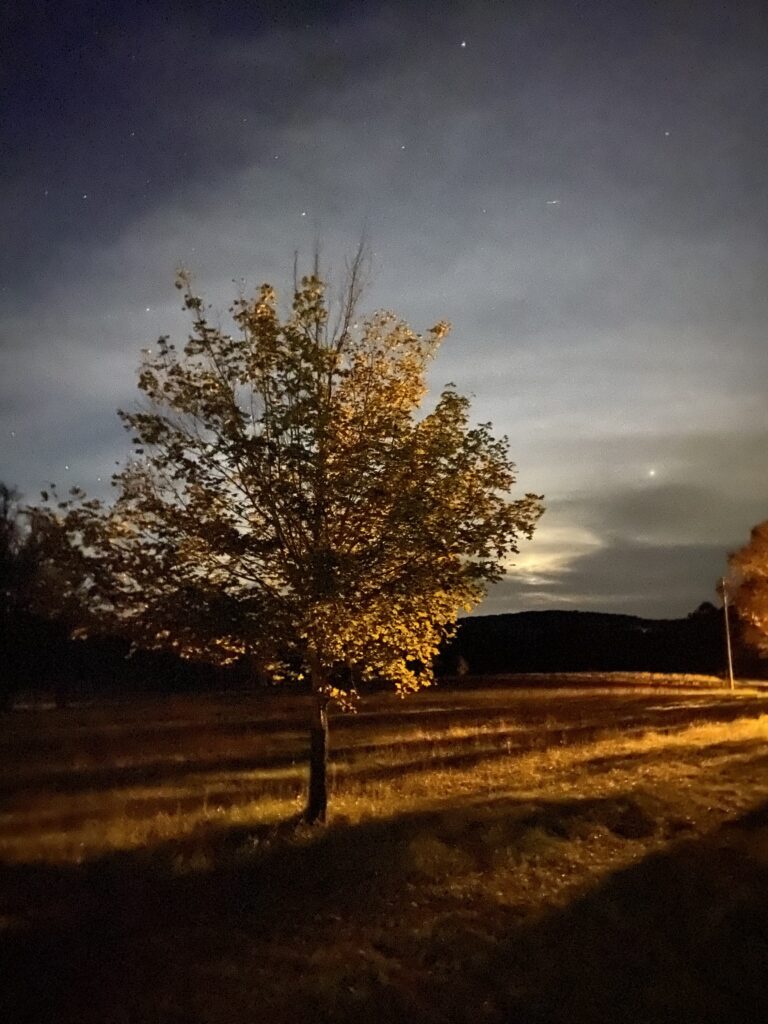
To get the pastures ready was a long process that required multiple passes with different implements with the tractor. Since we’re learning we decided to try a couple different combinations on different pastures to see what worked the best.
First was mowing the whole pasture, scalping the grass to the ground to make a good bed for the seed. It’s the first time we could be down so late and we made the most of the time.
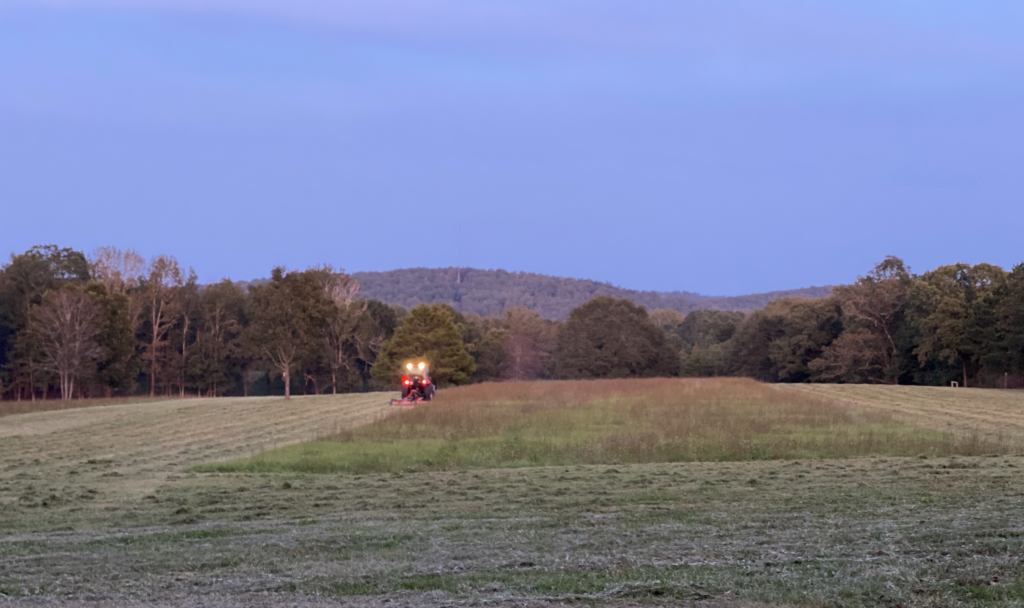
Once the pastures were all mowed, it was time to put down the fertilizer mix that we needed based on the sample we’d sent to our local UGA Ag agent.
The local fertilizer company mixes what you need and puts it in a tote to spread all over the pasture. It’s like a spreader on steroids .
Brett decided to plow down by the pond. We noticed when we had lime put in that if we plowed afterwards the lime seemed to get into the soil better and that upper pasture did better than the other ones last year.
Plowing is hard. It’s a straight physical ripping of the soil and there is no way around the body-breaking back and forth of the tines ripping into the ground. This part of the pasture also had lots of roots from the trees that were there so many years ago.
When it’s done, it looks like this.
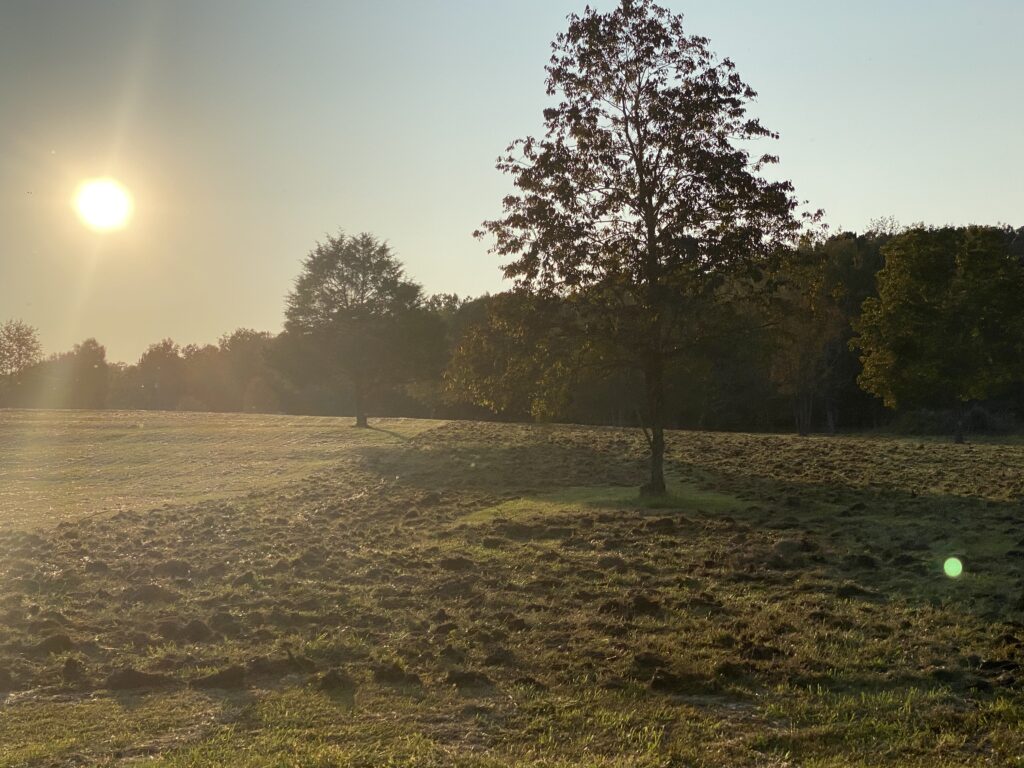
At this point we decided that plowing this part of the pasture was the only part we would plow, to see how it did once we planted it.
To plant, we used a no-till drill. This piece of equipment can cost upwards of $15K which is a huge investment that is hard to justify to plant twice a year. However, there’s a local program that allow you to rent one for $14 per acre, which is pretty fabulous. So we rented a brand new unit for less than $500.
The no-till drill has three seed compartments. Two large for larger seeds like rye and fescue and a smaller compartment for little seed like clover.
We planted rye everywhere, fescue under the pecans, and everything down by the pond and up by the bees.
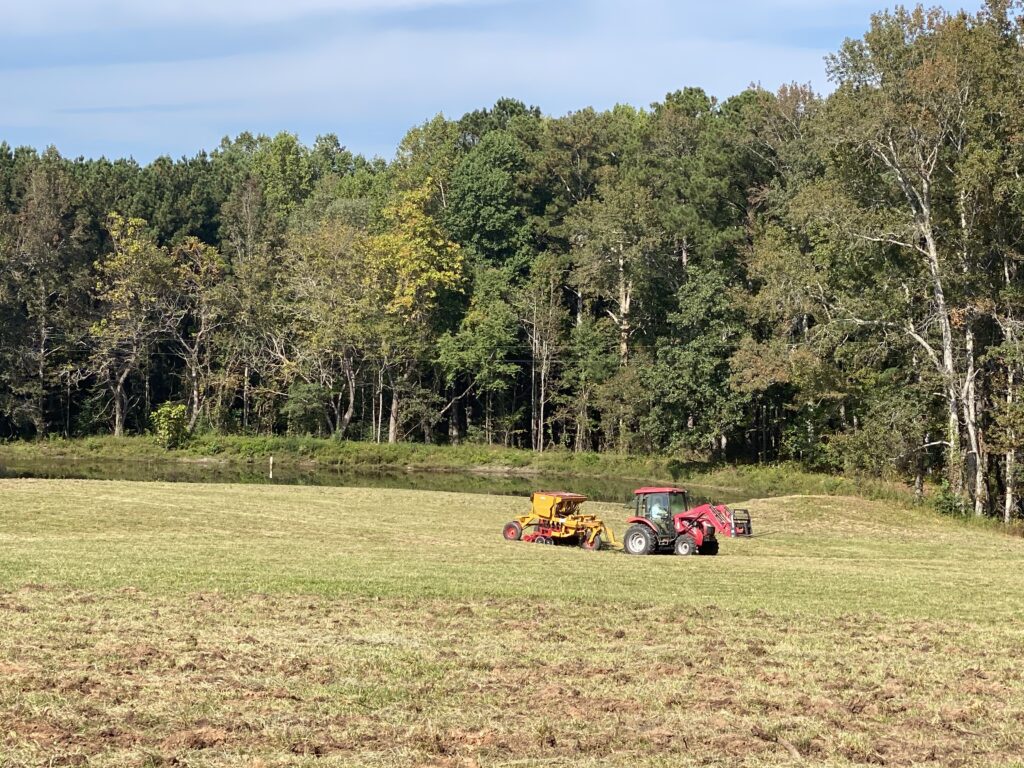
We planted 800 pounds of rye, 400 of fescue and 450 of clover.
We had perfect weather. Sunny and not too hot, and rain in the forecast two days after planting.
And now, we wait.
